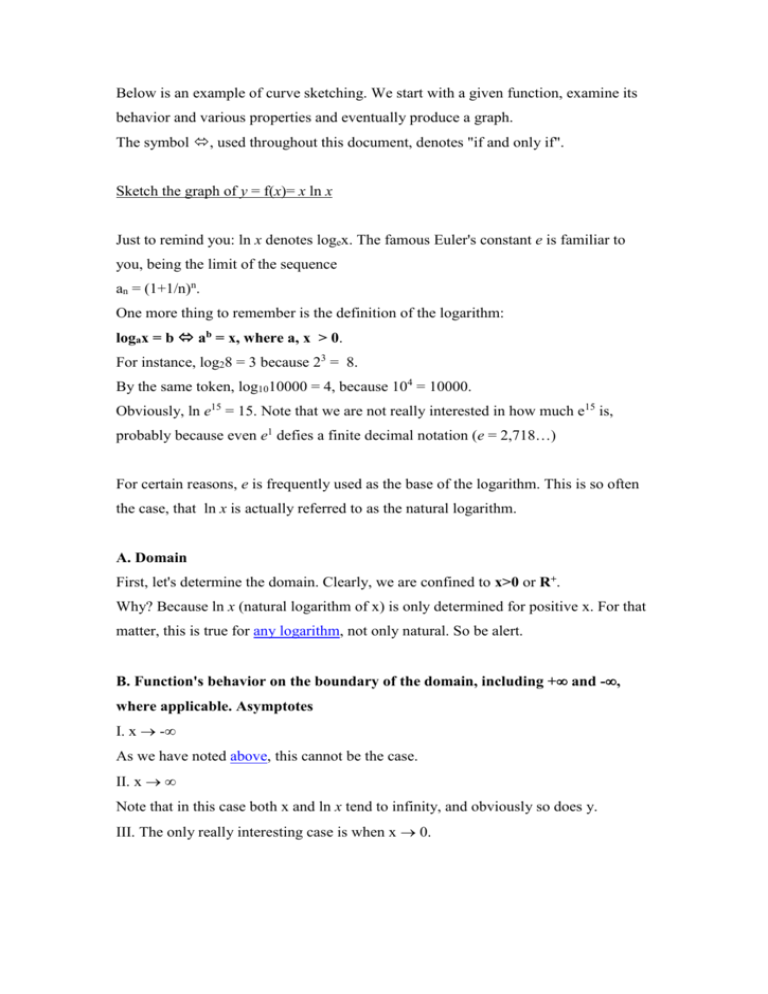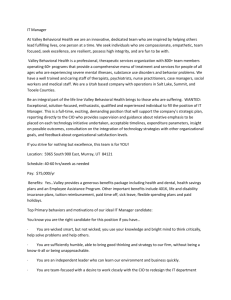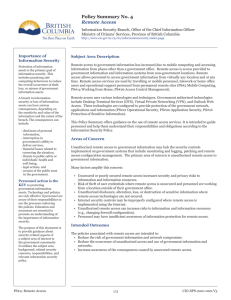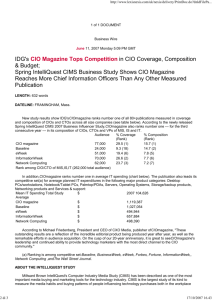Sketch the graph of y = x ln x
advertisement

Below is an example of curve sketching. We start with a given function, examine its behavior and various properties and eventually produce a graph. The symbol , used throughout this document, denotes "if and only if". Sketch the graph of y = f(x)= x ln x Just to remind you: ln x denotes logex. The famous Euler's constant e is familiar to you, being the limit of the sequence an = (1+1/n)n. One more thing to remember is the definition of the logarithm: logax = b ab = x, where a, x > 0. For instance, log28 = 3 because 23 = 8. By the same token, log1010000 = 4, because 104 = 10000. Obviously, ln e15 = 15. Note that we are not really interested in how much e15 is, probably because even e1 defies a finite decimal notation (e = 2,718…) For certain reasons, e is frequently used as the base of the logarithm. This is so often the case, that ln x is actually referred to as the natural logarithm. A. Domain First, let's determine the domain. Clearly, we are confined to x>0 or R+. Why? Because ln x (natural logarithm of x) is only determined for positive x. For that matter, this is true for any logarithm, not only natural. So be alert. B. Function's behavior on the boundary of the domain, including + and -, where applicable. Asymptotes I. x - As we have noted above, this cannot be the case. II. x Note that in this case both x and ln x tend to infinity, and obviously so does y. III. The only really interesting case is when x 0. We cannot immediately see what happens then, since x 0 and ln x -. Why is the latter true? Remember the definition of the logarithm. If you care to see it "in practice", here are a few arbitrary pairs (x, y). x 3 2,718282 1 0,1 0,01 0,001 0,0001 0,00001 ln x 1,10 1,00 0 -2,30 -4,61 -6,91 -9,21 -11,51 Back to our function's behavior in 0. Since we don't know how (x ln x ) behaves as x 0, let's try to present f(x) in a different, but equivalent, form. We have x ln x = ln x . 1 x Now we can see that the numerator tends to - and the denominator tends to as x tends to 0, so we have an indeterminate expression. (Remember, x > 0, so 1/x can only be regarded as a right hand limit of f(x) when x 0; In other words, when x 0+). This is good news, of course, since we can now apply the d'Hospital rule. Replacing the numerator and the denominator with their respective derivatives, namely (ln x)' = 1/x 1 1 1 11 x 2 2 , ( x )' 1 x x x ' we obtain 1 x 0 x x 0 1 x2 Conclusion – the original expression, i.e. y = x ln x, tends to 0 as x tends to 0. Now, perhaps, we can appreciate the beauty and power of the d'Hospital rule… As for asymptotes, there are no vertical ones (why?). Is there a slant or horizontal one? The answer is: yes, if and only if f(x)/x is finite as x tends to infinity. Because f(x)/x = ln x which becomes arbitrarily large as x increases (in other words, diverges to infinity), there is no slant asymptote. Hence, there is no horizontal asymptote, either (why?). C. Zero(es) of the function Next, let's see if function y has a zero (or more than one). We call x0 a zero of function f f(x0) = 0. A function may have one or more zero(es) or none at all – it depends on the function. y = 0 x ln x = 0 1) x = 0 or 2) ln x = 0. Since we are confined to x>0, we only need consider case 2). Let's see ln x = 0 x = e0 x = 1. Conclusion – this function has exactly one zero, namely x0 = 1. D. Derivative, its sign, and its consequences y' = (x ln x )' = ? Since y is a product of 2 functions, viz. x and ln x, we have to use the product rule: (f*g)' = f'*g + f*g' Thus, we have f'(x) = y' = 1*ln x + x*(1/x) = ln x + 1. This is zero when ln x = - 1 x = e-1 = 1/e Looking at the sign of the derivative we see that the function is decreasing between x = 0 and x = e-1 (when y' < 0) and increasing thereafter. E. Stationary point(s), second derivative, minimum and maximum values The necessary condition for a local minimum/maximum to exist is y' = 0 (this is because this function is differentiable all over its domain; if we dealt with a less 'regular' function, we would have to check all the points where it is not differentiable). As we have just established, this is only the case for x = e-1. Let's derivate again and see what happens. f''(x) = y'' = (y')' = (ln x + 1)' = 1/x + 0 = 1/x Since f''(e-1) = 1/ e-1 = e > 0, we conclude that y has a local minimum at x = e-1. We have f(e-1) = e-1 * ln e-1 = e-1 * (-1) = - e-1 Admittedly, an elegant result. Incidentally, we notice that y'' > 0 all over the domain (why?) F. Convexity, concavity, inflection point(s) Since y'' > 0, the function is convex, period. There is, therefore, no inflection point (why?) G. Graph x f(x) 0,0000001 0,2 0,367879 0,6 0,7 0,9 -0,0000016 -0,3 -0,367879 -0,3 -0,2 -0,1 1,1 0,1 1,3 0,3 1,5 0,6 1,7 0,8 1,8 1,1 Values of x and y have been rounded for clarity. Just in passing, e-1 = 0,367879… 1,6 1,4 1,2 y 1 0,8 0,6 0,4 0,2 0 -0,20,0 -0,4 -0,6 x 0,2 0,37 0,6 0,7 0,9 1,1 1,3 1,5 1,7 1,8 2,0 2,0 1,4











